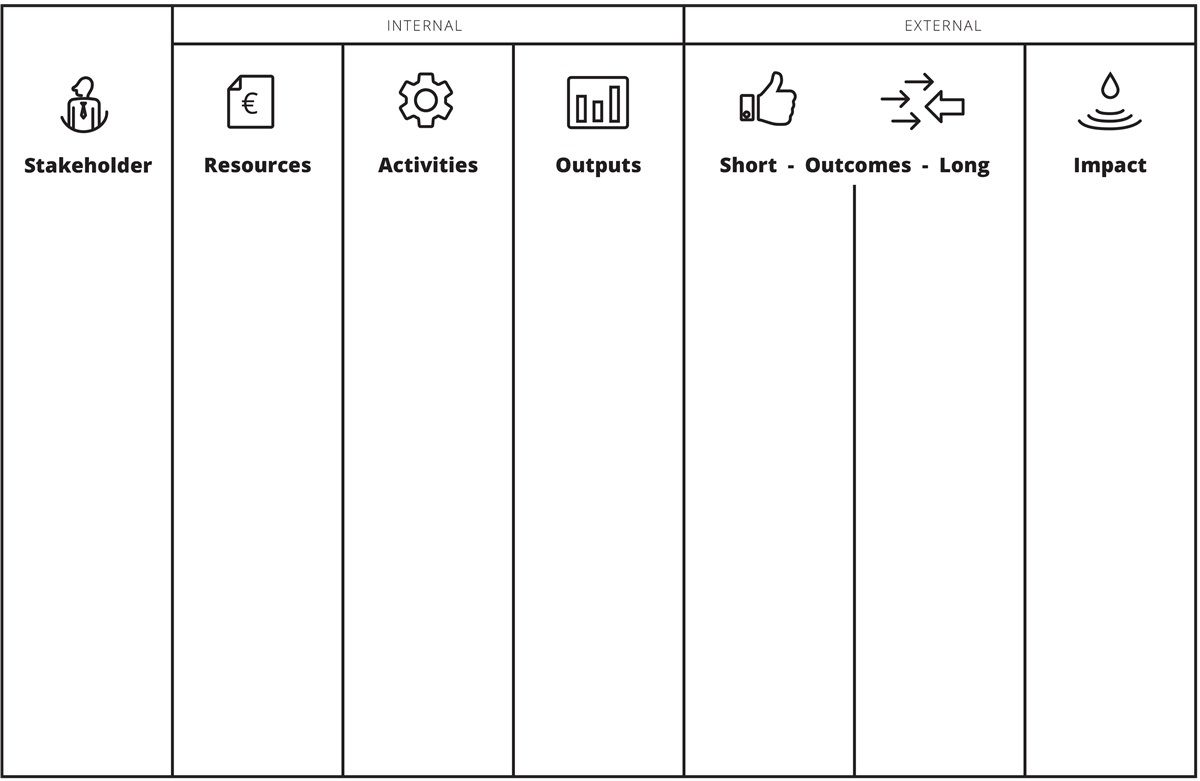What do we mean by impact?
Impact is the change(s) that occur for stakeholders or in society…
We want to contribute to a better world - think of things like reduced poverty, more tolerance, more well being or happiness - but this vision is abstract and so high-level that we alone can’t be accountable for this.
…as a result of our activities (for which the organisation is accountable).
The impact vision drives what we do. We create activities that help us contribute towards this big picture - and we are accountable for those activities creating a positive change with the stakeholders that we design them for.
What do we mean by impact design?
We mean design in two ways. In Phase one of the Europeana Impact Playbook, we set out a methodology that helps you design impactful activities by putting your desired impact and the needs of your stakeholders right at the centre of your planning. In Phase two, we share an approach to designing your impact assessment and starting to measure the change that your stakeholders experience.
Why should you put your impact first?
The new online Impact Playbook sets out a streamlined approach to working with your colleagues to agree your impact vision and create a path through which you think your activities contribute to this. It helps us to focus on trying to better understand what changes you create when they happen close to us and directly as a result of our actions.
Most organisations have an organisational mission statement or vision. If you are working as part of a standalone project, you might have a different impact vision that you’re working towards, for example, if you are funded to meet a certain policy objective. If you don’t know what impact you’re working towards, the Impact Playbook can help you to start articulating this and then planning for how to reach it. You can use our Strategic Perspectives tool to help you understand what problem you are trying to solve and where you think you can have the most impact.
How can you put your stakeholder at the centre?
Our approach puts your stakeholder at the centre by making you answer the question, who are you doing this for? By mapping out those groups of people who benefit directly and indirectly from your activities, you can start to better understand the types of changes they’ll experience as a result of your work. You can also start to get to know the pains and gains of the stakeholder better by doing some empathy mapping.
How and why should you map out your change?
The Impact Playbook is centred around a tool called the Change Pathway. This helps us create a path from our stakeholder, the activities we design for them, and the impact that we are trying to create. In the middle, we map out the type of changes - the outcomes - that our stakeholders have to experience so that we contribute to the impact vision.
Once you know what impact you’re working towards, and who you are creating change for in the shorter term, it’s now time to map out the outcomes that you want your stakeholder to experience as a result of your activities. Focus on one activity and one stakeholder per Change Pathway because different activities can lead to different outcomes for different people.



